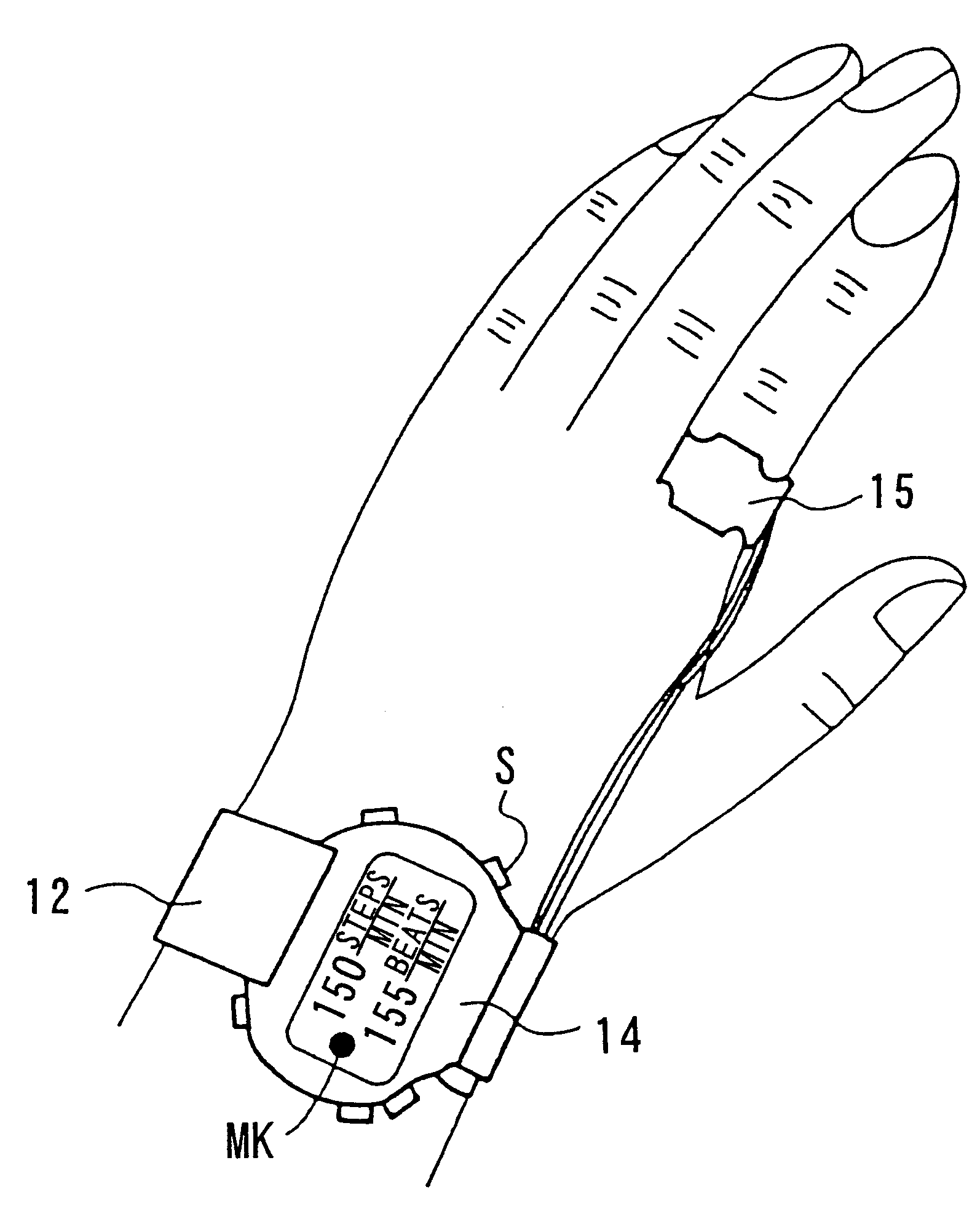Exercise workout support device
- Summary
- Abstract
- Description
- Claims
- Application Information
AI Technical Summary
Benefits of technology
Problems solved by technology
Method used
Image
Examples
embodiment 1
1. Embodiment 1
The first preferred embodiment of the present invention will now be explained with reference to the accompanying figures.
1.1 Structure of the Embodiment
First, a maximum oxygen uptake quantity estimating device according to the first embodiment will be explained. The maximum oxygen uptake quantity estimating device according to this embodiment employs an Astrand-Ryhming nomogram (Astrand, P.O. and Ryhming, I.: A nomogram for calculation of aerobic capacity (physical fitness) from pulse rate during submaximal work. J. Appl. Physiol., 218.about.221, 1954.) to estimate the maximum oxygen uptake quantity (VO.sub.2max (liter / min)) from the exercise intensity (operational intensity, work) and heartbeat rate at a given point in time as a test subject is performing a specified exercise. This estimated value is then divided by the test subject s body weight, to obtain a maximum oxygen uptake quantity (VO.sub.2max / wt (unit: milliliter / kg / min)) per unit body weight.
1.1.1. Astran...
embodiment 2
2. Embodiment 2
An explanation will now be made of the second embodiment of the present invention.
Although there are slight differences between individuals, stride is generally viewed to become shorter when the pitch of running is increased. However, in the first embodiment, a constant value for stride was employed despite the fact that the pitch was increased, since the stride value set in RAM 203 was used without modification. Namely, the first embodiment does not take into consideration this characteristic of running.
Accordingly, from this perspective, the first embodiment has a flaw in that the exercise intensity obtained at step Sa3 tends to be inaccurate.
Thus, in the second embodiment, a table showing the relationship between pitch and the stride correction coefficient is obtained in advance and stored. When the pitch changes during running, then the stride correction coefficient corresponding to the changed pitch is read out, and multiplied by the stride set in RAM 203, so as ...
embodiment 3
3. Embodiment 3
The third embodiment of the present invention will now be explained.
When running, it is not necessary the case that the activity is limited to a flat path. Rather, on the typical road, there are generally some slopes. In the case where slopes are present during running, the stride becomes shorter when running up the slope, but becomes longer when running down the slope (in the case of marathon runners, however, this relationship is reversed).
For this reason, when running on a slope, the stride will vary even if the pitch is constant. Thus, the exercise intensity changes. However, in the first embodiment above, the value set in RAM 203 is employed for stride. Accordingly, if pitch is constant, then exercise intensity is calculated as a constant value even if slopes are present.
Accordingly, the first embodiment has a disadvantage in that the exercise intensity obtained in step Sa3 tends to be inaccurate.
Therefore, in this third embodiment, the slope during running is ob...
PUM
 Login to View More
Login to View More Abstract
Description
Claims
Application Information
 Login to View More
Login to View More - R&D
- Intellectual Property
- Life Sciences
- Materials
- Tech Scout
- Unparalleled Data Quality
- Higher Quality Content
- 60% Fewer Hallucinations
Browse by: Latest US Patents, China's latest patents, Technical Efficacy Thesaurus, Application Domain, Technology Topic, Popular Technical Reports.
© 2025 PatSnap. All rights reserved.Legal|Privacy policy|Modern Slavery Act Transparency Statement|Sitemap|About US| Contact US: help@patsnap.com



